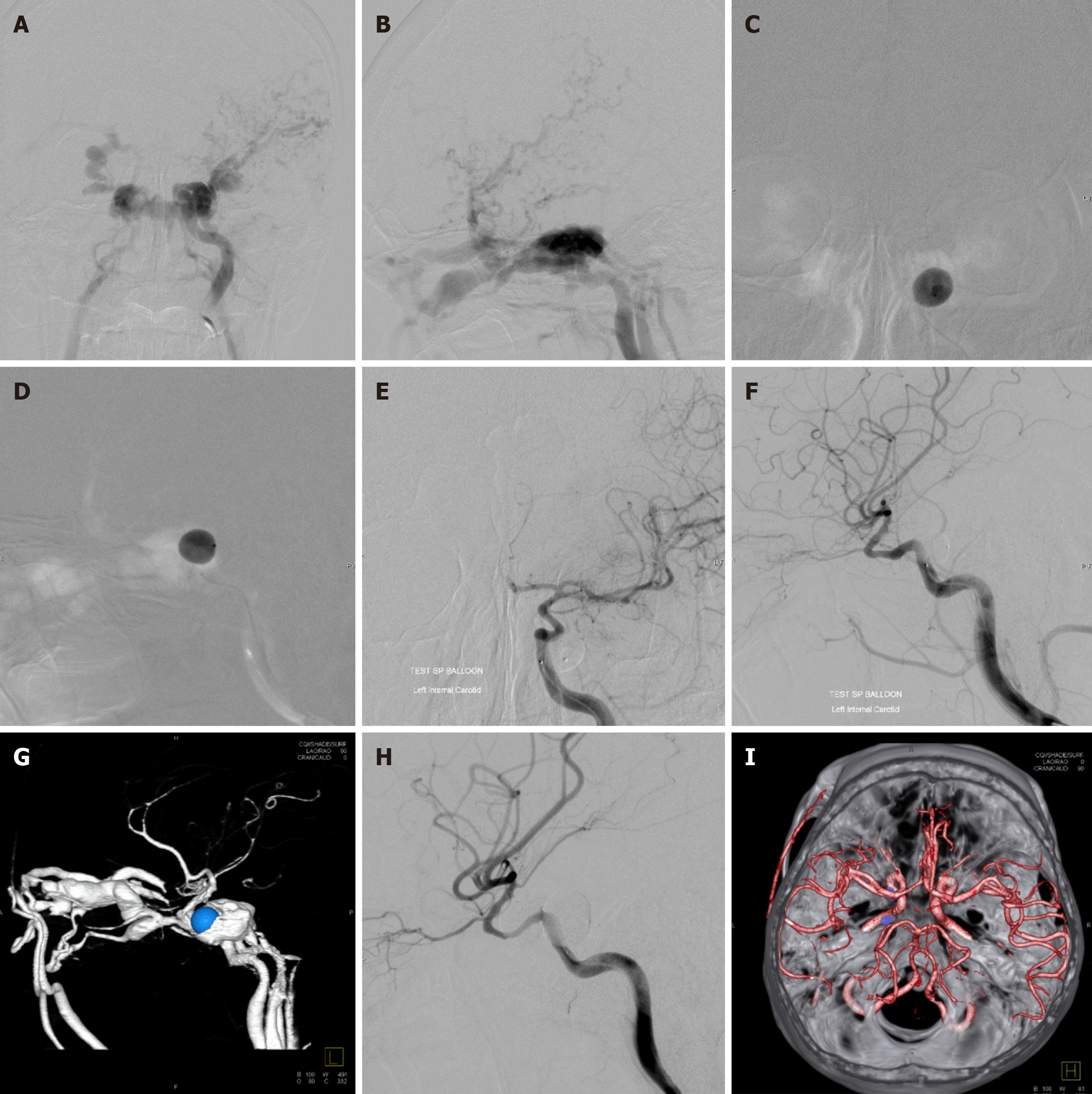Copyright
©The Author(s) 2024.
World J Radiol. Apr 28, 2024; 16(4): 94-108
Published online Apr 28, 2024. doi: 10.4329/wjr.v16.i4.94
Published online Apr 28, 2024. doi: 10.4329/wjr.v16.i4.94
Figure 5 A 40-year-old male presented with left proptosis and audible bruit after a motor vehicle accident 4 months prior.
A and B: Anteroposterior (AP) and lateral views of the left internal carotid artery (LICA) injection showed large traumatic carotid-cavernous fistula without antegrade flow into the anterior and middle cerebral arteries; C and D: AP and lateral views of the LICA demonstrated a detachable balloon during inflation at the left posterior cavernous sinus under road-mapping; E and F: AP and lateral views of the LICA injection revealed complete obliteration of the fistula; G: Lateral view of three-dimensional reconstructed images of the LICA using computed tomography angiography (CTA) of the LICA obtained 3 d after embolization showed recurrent traumatic carotid-cavernous fistula with displacement of a balloon into the anterior cavernous sinus; H: Lateral view of the LICA injection revealed complete obliteration of the fistula after retreatment with another balloon; I: Three-dimensional reconstructed image of both ICAs, vertebrobasilar system, and skull base using CTA obtained 6 months after embolization confirmed no residual pseudoaneurysm (grade 0).
- Citation: Iampreechakul P, Wangtanaphat K, Chuntaroj S, Wattanasen Y, Hangsapruek S, Lertbutsayanukul P, Puthkhao P, Siriwimonmas S. Pseudoaneurysm formation following transarterial embolization of traumatic carotid-cavernous fistula with detachable balloon: An institutional cohort long-term study. World J Radiol 2024; 16(4): 94-108
- URL: https://www.wjgnet.com/1949-8470/full/v16/i4/94.htm
- DOI: https://dx.doi.org/10.4329/wjr.v16.i4.94









